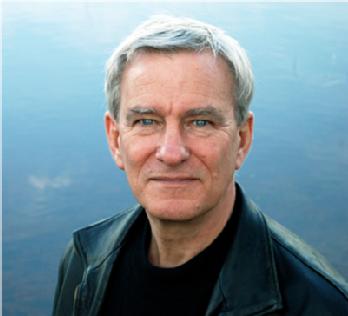Secrets of innovation revealed in study of global video game industry
 From the adventures of Lara Croft in Tomb Raider to the apocalyptic drama of Fallout - new research from the University of Warwick has revealed the secret to how some of the world’s most iconic video games were created.
From the adventures of Lara Croft in Tomb Raider to the apocalyptic drama of Fallout - new research from the University of Warwick has revealed the secret to how some of the world’s most iconic video games were created.
Professor David Stark says it is because the creative teams behind these ground-breaking titles had the ideal mix of career backgrounds and working relationships.
He claims his research offers a fresh insight into the factors which stimulate innovation – theories that can also apply away from the video gaming industry.
The ‘Big Data’ analysis looked at the people involved in every video game invented between 1979 and 2009 – a total of 23,422 titles – including their career backgrounds and who they had worked with in the past.
He then singled out the truly ground-breaking games, where “critics positively embraced their unconventional concepts”, by studying tens of thousands of reviews.
Cross-referencing the two sets of data, Prof Stark, from Warwick’s Centre for Interdisciplinary Methodologies, identified patterns which specifically linked the social arrangement of a team with the degree of innovation in the products they created.
He explained: “Say you put a team of developers together and you ask them to be inventive, but they’ve all been exposed to the same things in the past, i.e. they’ve worked on similar games previously or for the same companies. Well, it’s not very likely they’ll come up with something new.
“You obviously need diversity in a team to stimulate creativity. However, if you put together a team where they’ve all been exposed to very different things, you have the potential to innovate, but there are also challenges for coordination within the group because there is such a range of backgrounds.
“You might think to yourself when you are working with someone for example ‘I don’t know what the hell she’s saying, I don’t get it at all’ but then someone tells you ‘I’ve worked with that person before and she’s great and you should listen to what she’s saying’, so you do.
“Most people will say friction within a team is bad but what we’ve found from this research is that actually it’s a very good thing for creativity but it needs social structural support to turn it into something productive – that is people who have worked with other people in the team previously. If two people don’t understand each other’s ideas, whilst there is friction, it can be positive and lead to innovation.
“You have to see a team not as a group of individuals but as a group of groups – of which the members are interchangeable. You’re basically pulling the group apart but through the groups in the team that are overlapping you bring it back together. When groups move on to other projects their contribution to the innovative performances of the team is highest when they are structurally folded and their styles – based on their individual backgrounds – are sufficiently different.”
But how can these principles be applied to other workplaces outside the video game industry?
“We say you need a diverse mix of staff and enough social structure, i.e. enough people who have worked together in the past within that team, to make innovation work – and on top of that you need people in the organisation to say ‘don’t rush it’,” added Prof Stark.
“Ultimately what we are saying is that ideas can be in tension. The flow of information is not always smooth. Smoothness can be destructive. It’s about knowing when to put up with a lack of understanding, so you say: ‘I don’t get it, I don’t get what you’re saying but I will put up with that because I have some confidence that if I tolerate it we will arrive at something that none of us would have thought about’. That’s where you innovate.”
“It’s not an easy balance to get right, because it’s impossible to know everyone’s history – but the underlying principle is important; the path for an individual to promote creativity is to belong to two teams as knowledgeable as them and to ignite the value of their misunderstood differences.”
Notes to Editors:
Professor David Stark’s paper Game Changer: The Topology of Creativity has been published in the most recent edition of the American Journal of Sociology and is available to download online.
Professor Stark is currently in Italy but is available for telephone interviews or via Skype. Contact Lee Page, Communications Manager at The University of Warwick. Tel: +44 (0)2476 574 255. Mob: +44 (0)7920 531 221. Email: l.page@warwick.ac.uk.
Monday 15 June 2015 PR 122
Contact:
Lee Page
Communications Manager, University of Warwick
Tel: +44 (0)2476 574 255
Mob: +44 (0)7920 531 221
Email: l.page@warwick.ac.uk
